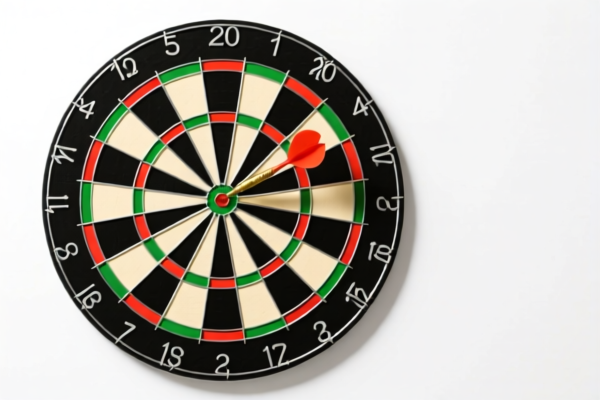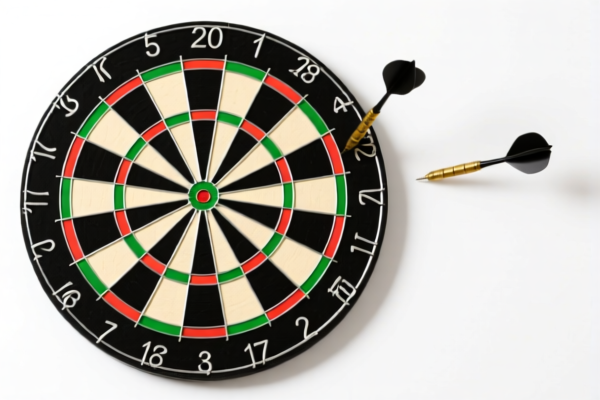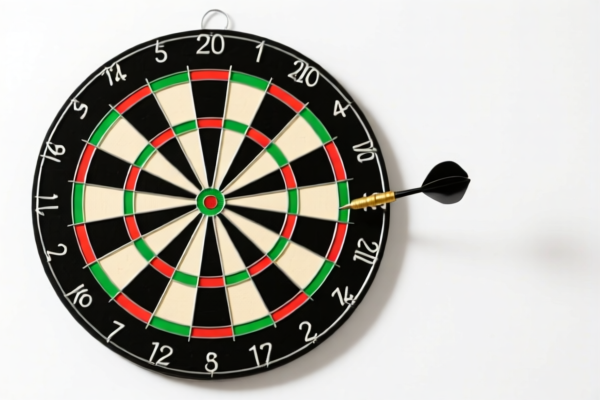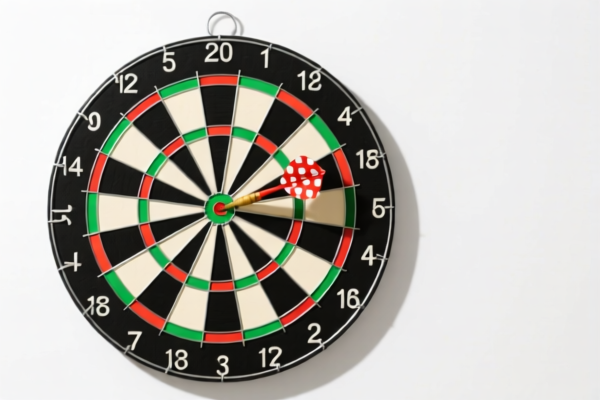| HS Code | Official Doc | Tariff Rate | Origin | Destination | Effective Date |
|---|---|---|---|---|---|
| 7326908688 | Doc | 82.9% | CN | US | 2025-05-12 |
| 7323995030 | Doc | 55.0% | CN | US | 2025-05-12 |
| 7323999030 | Doc | 83.4% | CN | US | 2025-05-12 |
| 8214909000 | Doc | 1.4¢ each + 3.2%+30.0% | CN | US | 2025-05-12 |
| 8215995000 | Doc | 35.3% | CN | US | 2025-05-12 |
| 8310000000 | Doc | 55.0% | CN | US | 2025-05-12 |
| 8301406060 | Doc | 43.2% | CN | US | 2025-05-12 |




Dart Plate
A dart plate, commonly referred to as a dartboard, is a target used in the game of darts. It is a circular board divided into sections of varying point values, designed for players to throw darts at.
Material
Traditionally, dartboards were constructed from the wood of a sycamore tree, specifically the trunk. Modern boards commonly utilize sisal fibers, derived from the agave plant, due to its durability and self-healing properties. Wire is used to segment the board into numbered sections and to define the outer bullseye and double/triple rings. Foam rubber or similar materials are sometimes used for backing and cushioning.
Purpose
The primary purpose of a dartboard is to provide a standardized target for players to compete in the game of darts. Scoring is determined by where the dart lands on the board.
Function
The board functions by providing clearly defined scoring areas. The sections are arranged in a circular pattern, with numbered wedges radiating from the center. Key areas include:
- Numbers 1-20: These wedges represent the primary scoring values.
- Double Ring (Outer Ring): Landing a dart in this ring doubles the value of the corresponding number.
- Triple Ring (Inner Ring): Landing a dart in this ring triples the value of the corresponding number.
- Bullseye: The central area, typically divided into an inner and outer bullseye, offering high point values (typically 50 for the inner and 25 for the outer).
- Outer Bull: The ring surrounding the bullseye, worth 25 points.
Usage Scenarios
Dartboards are used in a variety of settings:
- Pubs and Bars: A traditional setting for casual and competitive dart games.
- Home Recreation: Increasingly popular for personal enjoyment and family games.
- Competitive Leagues & Tournaments: Professional dart players utilize standardized boards in organized competitions.
- Practice: Used for individual skill development and training.
Common Types
- Sisal Boards: The most common type, known for their durability and self-healing properties. Available in various qualities and sizes.
- Bristle Boards: Another term for sisal boards, emphasizing the fiber construction.
- Paper Boards: Less expensive, typically used for casual play or by beginners. Less durable than sisal boards.
- Electronic Dartboards: Feature sensors to automatically calculate scores. Often include game variations and player statistics.
- Magnetic Dartboards: Utilize magnetic darts and a steel board. Safer option for children or environments where sharp darts are undesirable.
- Chalkboard Dartboards: Less common, designed for writing scores directly on the board.
Based on the provided information, “dart plate” can be classified under the following HS codes:
-
7326908688: This HS code falls under Chapter 73, which covers articles of iron or steel. Specifically, it relates to “Other articles of iron or steel: Other: Other: Other Other”. The tax details indicate a base tariff of 2.9%, a surcharge of 25.0%, and a surcharge of 30.0% after April 2, 2025, with an additional 25% surcharge for steel and aluminum products. The total tariff rate is 82.9%.
-
8310000000: This HS code is categorized under Chapter 83, covering sign plates, name plates, address plates and similar plates, numbers, letters and other symbols, and parts thereof, of base metal, excluding those of heading 9405. It has a base tariff of 0.0%, a surcharge of 25.0%, and a surcharge of 30.0% after April 2, 2025, resulting in a total tariff rate of 55.0%.
According to the provided reference material, the HS code options related to 'dart plate' are limited, with only the following 2 found.
Customer Reviews
No reviews yet.